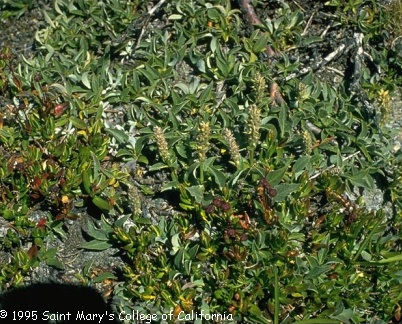
|
|

The Arctic willow is a dwarf shrub which grows close to the ground to avoid the cold wind. It has adapted to the permafrost by growing shallow roots. Sometimes it spreads out covering the ground like a carpet. Inuit call it the tongue plant because of the shape of its leaves. The leaves have adapted to the cold by growing long fuzzy hairs.
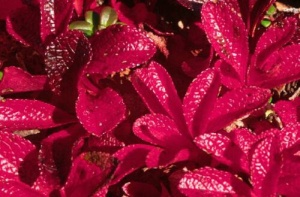
In late summer the leaves turn red.
(photo - W.Scott Elliot)Arctic willow is food for Peary caribou, musk oxen and arctic hares.
Arctic willow in late summer
(photo - W.Scott Elliot)
|
|
The beautiful Arctic poppy grows in many places, even among rocks. The flower is made up of four petals formed into a cup-shape.The stems are hairy and 10 to 15 cm high with a single flower on each stem. The flower heads move to face the sun and soak up the heat of the sun.
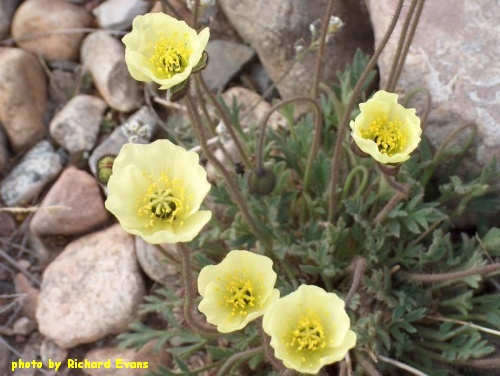
|
|
Many tundra plants are called cushion plants. These plants grow in a low, tight clump that look like a cushion. The plants are able to trap pockets of warm air and for protection from the cold winds.The PURPLE SAXIFRAGE is a cushion plant. It can grow on very rocky ground. It is one of the earliest plants to bloom. It often flowers while the snow is melting. The purple star-shaped flowers are about 1 cm wide. Many tiny leaves cover the plant's short stems. The flowers grow above the cushion of small leaves. The leaves are fringed with tiny hairs to capture heat. Purple saxifrage is the floral emblem of Nunavut.
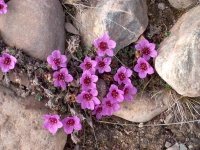
Another cushion plant is the MOSS CAMPION. The plant looks like a mossy green cushion with tiny pink flowers. The blossom is five petals on a very short stem. It can be found on rocks and in open cold areas.
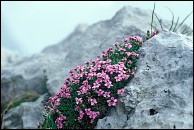
|
|
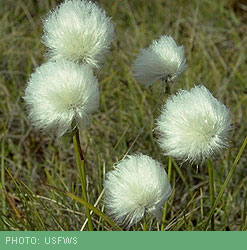
Cottongrass gets its name from the flowers which are like white puffy balls of cotton. This plant is food for migrating snow geese. Caribou calves that eat cottongrass are healthy and grow quickly.
A field of cottongrass looks like snow has fallen. The Inuit made good use of the fluffy cottongrass. They used the seed heads as wicks in oil lamps. Clumps were stuffed into babies' pants and then tossed when soiled (like a disposable diaper).
| ** INTRODUCTION ** PEOPLE ** ANIMALS ** PLANTS ** ARCTIC INDEX ** |
J.Giannetta
August,2000
updated April 2017
background: Arctic poppy